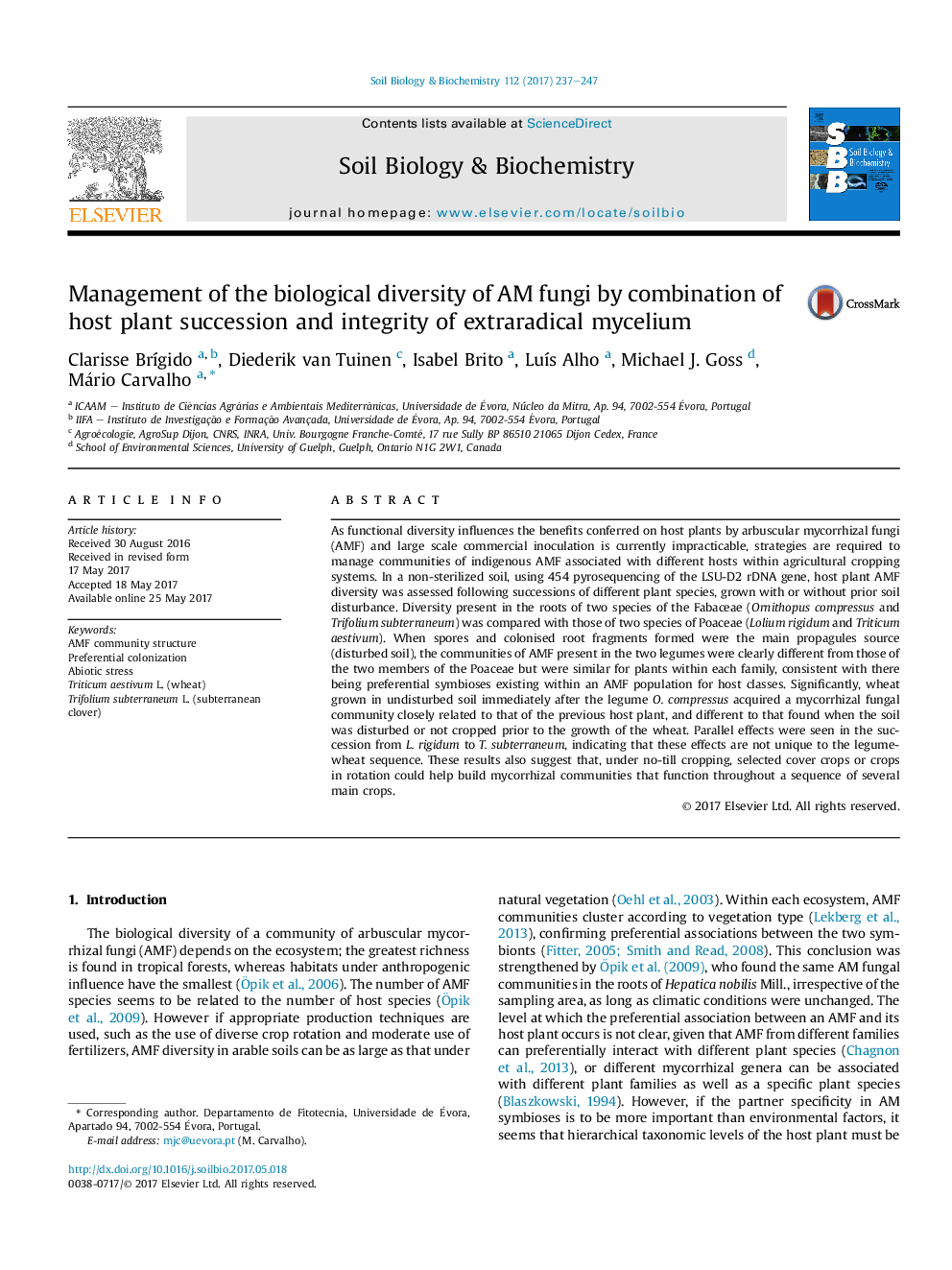| کد مقاله | کد نشریه | سال انتشار | مقاله انگلیسی | نسخه تمام متن |
|---|---|---|---|---|
| 5516353 | 1542572 | 2017 | 11 صفحه PDF | دانلود رایگان |

- Plants from Fabaceae and Poaceae differentially select AMF from a diverse population.
- The dominant propagule determines the AMF present in the host plant.
- In a plant succession, ERM from the first controls the AMF community in the second.
- Intact ERM provides a tool for managing AMF biodiversity within cropping systems.
As functional diversity influences the benefits conferred on host plants by arbuscular mycorrhizal fungi (AMF) and large scale commercial inoculation is currently impracticable, strategies are required to manage communities of indigenous AMF associated with different hosts within agricultural cropping systems. In a non-sterilized soil, using 454 pyrosequencing of the LSU-D2 rDNA gene, host plant AMF diversity was assessed following successions of different plant species, grown with or without prior soil disturbance. Diversity present in the roots of two species of the Fabaceae (Ornithopus compressus and Trifolium subterraneum) was compared with those of two species of Poaceae (Lolium rigidum and Triticum aestivum). When spores and colonised root fragments formed were the main propagules source (disturbed soil), the communities of AMF present in the two legumes were clearly different from those of the two members of the Poaceae but were similar for plants within each family, consistent with there being preferential symbioses existing within an AMF population for host classes. Significantly, wheat grown in undisturbed soil immediately after the legume O. compressus acquired a mycorrhizal fungal community closely related to that of the previous host plant, and different to that found when the soil was disturbed or not cropped prior to the growth of the wheat. Parallel effects were seen in the succession from L. rigidum to T. subterraneum, indicating that these effects are not unique to the legume-wheat sequence. These results also suggest that, under no-till cropping, selected cover crops or crops in rotation could help build mycorrhizal communities that function throughout a sequence of several main crops.
Journal: Soil Biology and Biochemistry - Volume 112, September 2017, Pages 237-247